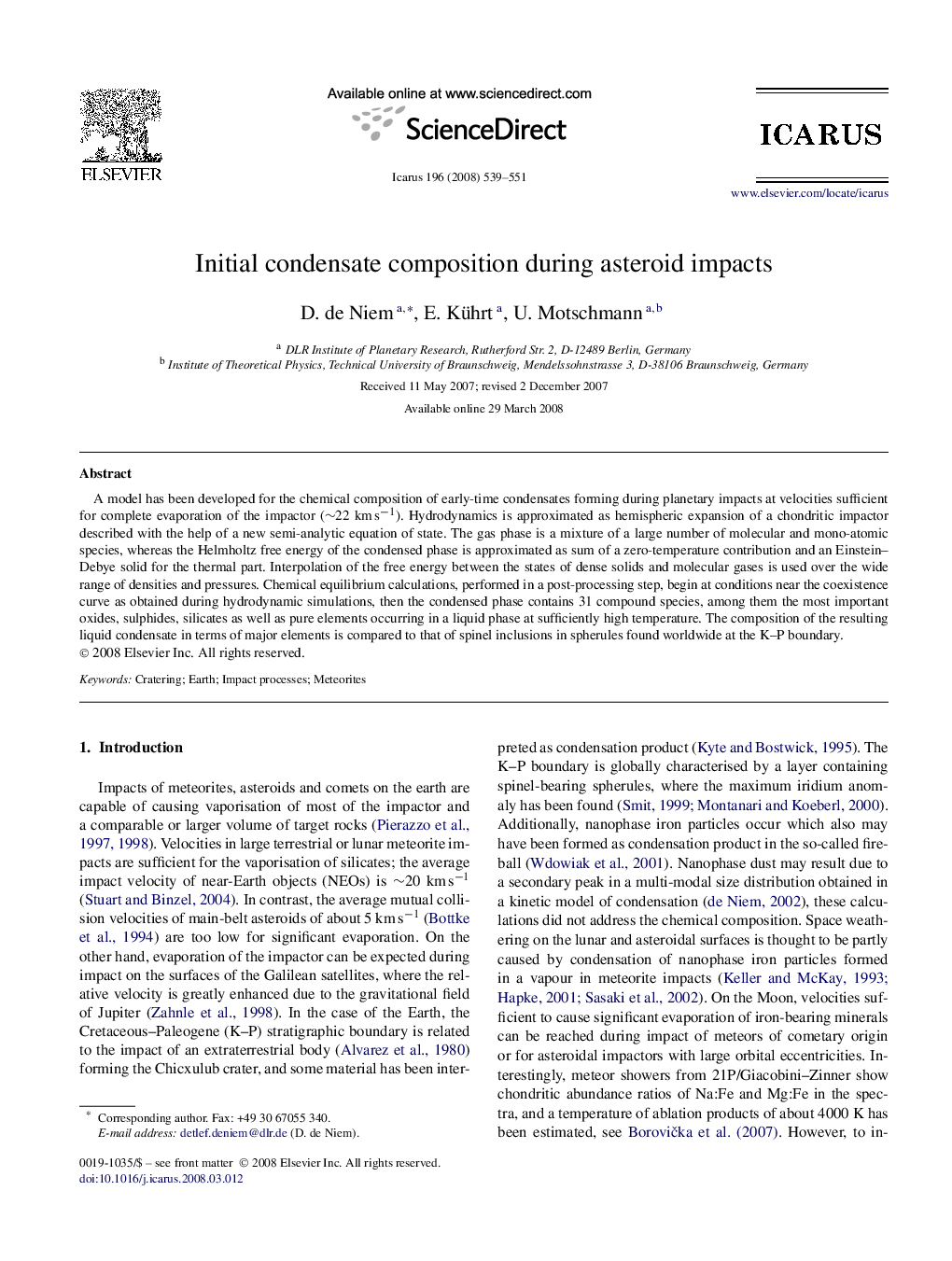| Article ID | Journal | Published Year | Pages | File Type |
|---|---|---|---|---|
| 1774869 | Icarus | 2008 | 13 Pages |
A model has been developed for the chemical composition of early-time condensates forming during planetary impacts at velocities sufficient for complete evaporation of the impactor (∼22 kms−1). Hydrodynamics is approximated as hemispheric expansion of a chondritic impactor described with the help of a new semi-analytic equation of state. The gas phase is a mixture of a large number of molecular and mono-atomic species, whereas the Helmholtz free energy of the condensed phase is approximated as sum of a zero-temperature contribution and an Einstein–Debye solid for the thermal part. Interpolation of the free energy between the states of dense solids and molecular gases is used over the wide range of densities and pressures. Chemical equilibrium calculations, performed in a post-processing step, begin at conditions near the coexistence curve as obtained during hydrodynamic simulations, then the condensed phase contains 31 compound species, among them the most important oxides, sulphides, silicates as well as pure elements occurring in a liquid phase at sufficiently high temperature. The composition of the resulting liquid condensate in terms of major elements is compared to that of spinel inclusions in spherules found worldwide at the K–P boundary.
